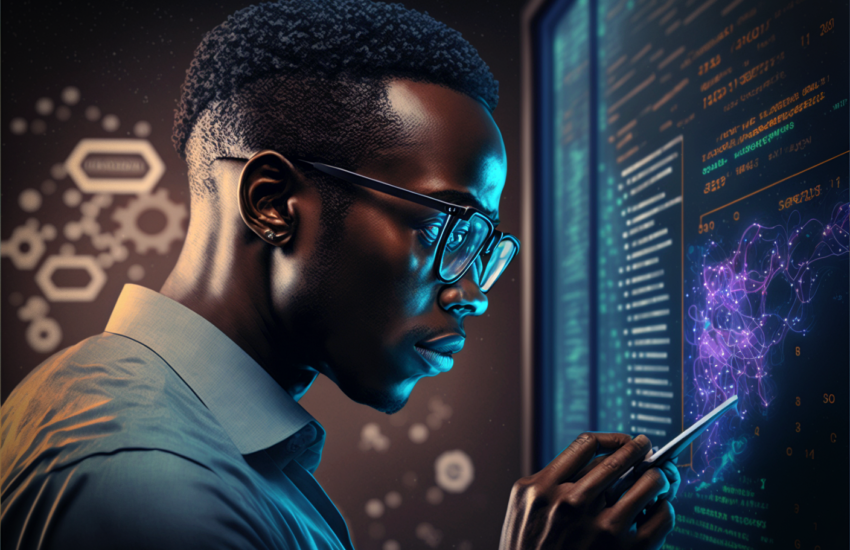Lead with Machine Learning: A Deep Dive for Business Leaders
Are you a business leader looking to stay ahead of the competition? Understanding the differences between supervised, unsupervised, and reinforcement machine learning (ML) is crucial, read on to discover why.
In order to make optimal business decisions, you’re going to need to know the differences between supervised, unsupervised, and reinforcement ML training methods. We know that many business problems can be solved with artificial intelligence (AI), but you’ll want to know which ML paradigm best solves your specific problem.
You’ll also want to know these differences in order to properly allocate resources in your company. Different types of ML require different resources, like data, domain knowledge, and computational power. Knowing which type of ML to use will help you make informed decisions about resource allocation.
Let’s take a deep dive into those three training models: supervised, unsupervised, and reinforcement ML.
Supervised Machine Learning
This training method uses labeled data to teach a computer to make predictions or decisions. The labeled data provides the correct “answers” so that the computer can learn from what humans have deemed accurate. The goal in supervised learning is for the computer to learn a mapping function from input data to corresponding output labels.
For business operations, supervised machine learning is used in image recognition, natural language processing (NLP), and predictive analytics. As a business leader, understanding supervised learning is important because it can be used to solve business problems like:
- Improving customer service
- Automating decision making processes
- Improving marketing campaigns through better targeting and personalization
Use Cases for Supervised Machine Learning
At Iterate.ai, we use supervised learning models in our low code platform, Interplay®. We offer a powerful image recognition solution for threat awareness, using supervised ML. With our image recognition capabilities, AI is trained, using supervised ML, to instantly identify guns, knives, and masks. This application of supervised ML fulfills a larger purpose: additional safety and security to the public.
We also have a use case for commercial insurance modeling using supervised learning. Our platform uses regression analyses and predictive models to predict the potential risks of applicants based on specific data fields (e.g., transaction history, location, product mix.) We then integrate the predictive results into various systems, which can be deployed in edge servers within offices, data centers, or secure cloud environments.
Unsupervised Machine Learning
Unsupervised machine learning finds patterns or structures in data without any prior knowledge of what the patterns represent. This algorithm can be used in two ways: (1) to identify patterns or data points that do not conform to the expected behavior, (2) to reduce the number of features in a dataset while preserving the important information.
Unsupervised learning is widely used in a variety of applications such as anomaly detection, clustering, dimensionality reduction, and feature selection. As an enterprise leader, understanding unsupervised ML is important because it can be used to solve a wide range of business problems, such as:
- Automating anomaly detection in network traffic or sensor data
- Improving the efficiency of manufacturing processes by identifying patterns in sensor data
- Improving customer segmentation by identifying clusters of similar customers
Use Cases for Unsupervised Machine Learning
Manufacturing and retail sectors benefit greatly from unsupervised ML. A manufacturing company can use this algorithm to analyze sensor data from equipment, identify patterns and anomalies in the data, and predict when equipment is likely to fail. This helps manufacturing companies schedule maintenance more efficiently and reduce downtime.
In retail, unsupervised ML can be used to analyze customer data (e.g., purchase history, demographics, browsing behavior) to identify patterns. This helps companies target marketing efforts more effectively and increase sales.
Unsupervised learning finds the probability of items co-occurring in a collection. This is usually used in customer behavior analysis in e-commerce.
Reinforcement Learning
Reinforcement learning is a cutting-edge method that learns how to make decisions by receiving feedback on its actions. It’s a trial-and-error approach where the software can adapt and improve over time.
Reinforcement learning has applications for self-driving cars, game playing, and robotics. It can also be used to train systems to perform complex tasks.
You will want to know what reinforcement learning is because it has the potential to bring significant business value. It can be used to optimize decision-making processes, control complex systems and automate tasks.
Reinforcement learning is also a rapidly growing field in AI research, and it’s likely to be adopted by more companies in the near future. Being familiar with the technology and its capabilities can give a competitive advantage to your company. It’s an important technology to keep an eye on and consider for future investments.
Use Cases for Reinforcement Learning
Netflix uses reinforcement machine learning to personalize their content recommendations to users. The algorithm learns from users’ interactions with recommendations provided by Netflix (e.g., when users watch or skip a recommended show.) That feedback is used to adjust recommendations in the future. The algorithm’s goal is to maximize the user’s engagement and satisfaction by providing the most relevant and interesting recommendations.
Self-driving cars, like Tesla, operate through the use of reinforcement learning. This ML algorithm allows self-driving cars to make decisions by training an algorithm, known as an agent, to interact with its environment, gather information and make decisions.
The agent receives feedback in the form of rewards or penalties based on the outcomes of its actions. Then, it learns to choose actions that lead to the highest expected reward. Through trial and error, the agent learns to navigate the environment, make decisions, and avoid obstacles.
What’s next?
Knowing the differences and applications of supervised, unsupervised, and reinforcement learning can take your business strategies to the next level. With the right knowledge, you can use these machine learning techniques to identify new opportunities for growth, gain a competitive edge, and improve your products and services.
Need a team of experts that can help you create a scalable application using either of these machine learning models? Contact us here to schedule a demo.

